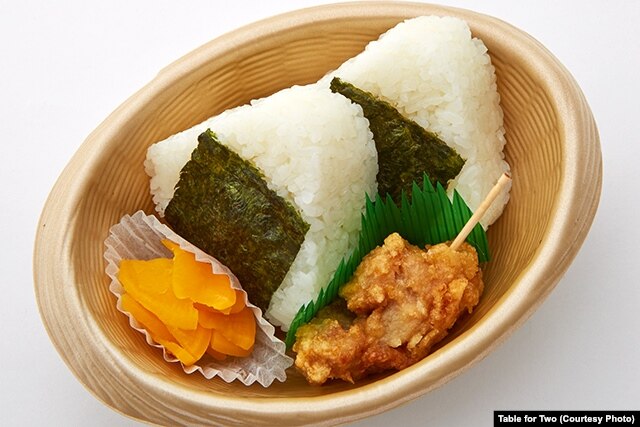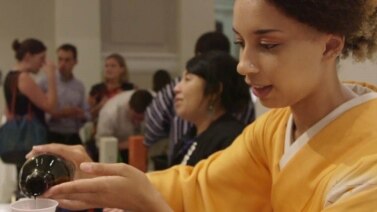
In Japan, onigiri rice balls are more common than sushi. And in Japanese culture, making o nigiri is a way to show love.
"You can make an onigiri by rolling rice in the palms of your hands,” said teacher – or sensei-- Takako Taniwaki at an onigiri-making class in Washington, D.C.
Onigiri is a comfort food in Japan. People bring rice balls for lunch. They are good for a picnic, field trip and school event because they are easy to carry.
And Taniwaki calls onigiri the soul food of the Japanese. Mothers and grandmothers make rice balls for their children or grandchildren with love.
That kindness goes beyond Japan. Three organizations in Washington, D.C. hosted an onigiri-making class to raise funds.Their fund-raising goal
Hunger is a worldwide issue. More than 150 countries celebrated World Food Day on October 16 to increase awareness of food-related issues.
Mayumi Uejima-Carr is co-president of Table for Two, one of the organizations raising funds and awareness. It is conducting its “One Million Itadakimasu" campaign until November 30. Itadakimasu is a Japanese word that expresses gratitude for food. It is a blessing said before eating.
"We want to think about children who need help," said Uejima-Carr.
Table for Two invites people to upload photos of making or eating onigiri to their website. The organization works with international companies to donate five meals for each photo uploaded. More than 2,300 photos have been uploaded so far from across the world.
Table for Two also supports schools in low-income neighborhoods in the U.S.
Uejima-Carr explained that food businesses donate 25 cents to upgrade a child’s school meal. That adds fresh vegetables to the meal.
Onigiri is also called omusubi. O is a Japanese word giving honor to someone or something. Nigiri comes from the verb nigiru, meaning to grasp and musubi comes from the verb musubu, meaning to tie or roll. The words express ideas of connection and closeness.
What’s in onigiri? There are seasonings on the rice, pickled Japanese plums and baked salty salmon. The students at the onigiri-making class uploaded their photos to the fund-raising website.
Then they ate onigiri together and said, “Itadakimasu!"
I’m Jill Robbins.
Now it’s your turn. Have you ever made a rice ball? Do you want to try a rice ball? What do you say when you start eating in your country? Please write to us in the comments section or on our Facebook page.
Haruka Takeuchi wrote this story for VOA Learning English. Kathleen Struck was the editor.
HOW TO MAKE ONIGIRI
Ingredients:
- Rice
- Fillings of your choice (Tuna, Pickled plum, chicken, salmon and so on)
- Water
- Salt
- Dried seaweed
Steps:
- Cook rice
- Put half a cup of steamed rice in a rice bowl. Wait for it to cool down.
- Wet your hand with water, or cut out about 10 inch sheet of plastic wrap. Put salt on your hands or on your plastic wrap.
- Place the rice onto your wet hand or onto the plastic wrap. Slightly spread the rice.
- Put the filling on the center of the rice then wrap it with the rice around it.
- Roll the rice in your hands and make it into a triangle, a ball or a cylinder.
- Wrap the rolled rice with seaweed. If you used plastic wrap, unwrap the rice and then put the seaweed on.
Words in This Story
grasp – v. to take and hold (something) with your fingers, hands, etc


